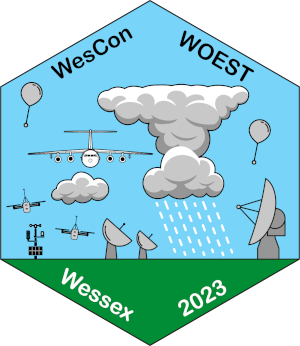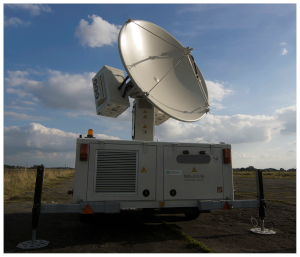
FORCE are supporting the WOEST field campaign and aim to offer both flight planning resources and daily forcasting products for the duration of the campaign. A new numerical model domain has been setup over the Sailsbury plain area that will provide the project team with daily forecast data to use for both planning and decision making.


The goal of the WOEST is to try and capture turbulent processes in the boundary layer and convective clouds from 10m to 1km scales as these evolve throughout the day and throughout the convective life cycle. Our understanding of turbulent processes in the atmosphere is largely derived from theory and large-eddy simulations (LES): There have been very few observations designed to evaluate the turbulent processes that are important for convection. The Wessex Convection Experiment (WesCon) aims to address this gap using a range of ground-based instruments, the FAAM aircraft, and the Chilbolton Advanced Meteorological Radar (CAMRa). Our project, WesCon – Observing the Evolving Structures of Turbulence (WOEST from Dutch, pron. “woo-st”), complements WesCon by (i) capturing the vertical and horizontal spatial variability and evolution of the boundary layer; (ii) obtaining 3D estimates of small-scale turbulence and larger-scale turbulent coherent structures in convective clouds; and (iii) supporting the WesCon model evaluation and development, including by providing novel retrievals of turbulent and dynamic processes. The proposed research enhances the WesCon campaign by making extensive use of radars to observe turbulent and dynamic processes at sub-km length scales and at sub-2-minute frequency, enabling a process-oriented evaluation of moist convection and boundary-layer evolution. Our approach combines a pair of steerable research-grade Doppler radars (one being CAMRa) with innovative adaptive scanning strategies that enable targeted 3D observations at 2-minute intervals of the same convective cloud targeted by the FAAM aircraft. Two additional scanning Doppler radars provide excellent broad coverage of the WesCon domain, capturing a 3D view of convective-cloud dynamics at 5-minute intervals. Our supersites at Chilbolton and Salisbury Plain host additional instruments, including a new Raman lidar, a UHF radar wind profiler, a novel array of cloud cameras and other boundary layer profilers, to study turbulence in the boundary layer and its influences on convective cloud development. Through supporting two mobile radiosonde stations and multi-drone capabilities, analysis of moist convective turbulence and boundary-layer evolution will be placed in the context of variability in the pre-convective environment. The observations will lead to a new understanding of the variability of turbulence and cloud dynamics from 10m-1km scales and of the variability and evolution of the boundary layer in the context of the surrounding cloud field, both of which will be evaluated in sub-km grid-length numerical weather prediction (NWP) model simulations provided by WesCon.
